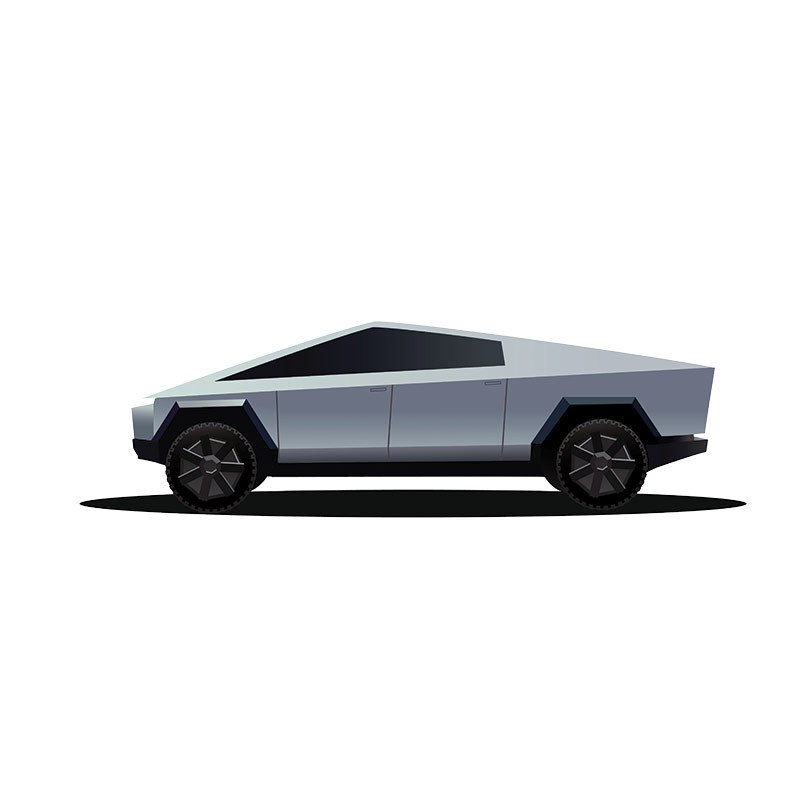 Recently, I was driving on the Cross County Parkway, a perilous, often-clogged artery north of Manhattan with twisty turns, narrow lanes, numerous on- and off-ramps, and a swarm of distracted and road rage-y drivers. It felt like a scene out of Road Warrior. Then, as if on cue, a new Tesla Cybertruck, with its jarring bead of LED headlights, started tailgating menacingly. While I feared for my family’s safety, I couldn’t help thinking of how off-brand it seemed for Tesla, a company that burst onto the scene fueled largely by concerned citizens, a.k.a. tree huggers, hoping to lessen their global footprint, not lead-footed, self-entitled terrors endangering their own lives and those of everyone around them.
Recently, I was driving on the Cross County Parkway, a perilous, often-clogged artery north of Manhattan with twisty turns, narrow lanes, numerous on- and off-ramps, and a swarm of distracted and road rage-y drivers. It felt like a scene out of Road Warrior. Then, as if on cue, a new Tesla Cybertruck, with its jarring bead of LED headlights, started tailgating menacingly. While I feared for my family’s safety, I couldn’t help thinking of how off-brand it seemed for Tesla, a company that burst onto the scene fueled largely by concerned citizens, a.k.a. tree huggers, hoping to lessen their global footprint, not lead-footed, self-entitled terrors endangering their own lives and those of everyone around them.
Driving a Tesla used to say a lot about a person. You were likely affluent, educated, and conscientious. Tesla Model S sedans were the antithesis of fossil-fuel-guzzling muscle cars and oversized SUVs. Drivers were part of a solution, albeit in style and with status that marked a big step up from Prius. Tesla, the new car candy, left legacy automakers in the dust.
But then came the Cybertruck and, not long after, Tesla CEO Elon Musk’s decision to take sides in our nation’s great political divide. Regardless of what side of the red/blue aisle you sit on, you have to concede that his decision to go full-MAGA alienates the customer base that made Tesla a leader in the electric car revolution. It seems like a car brand crash in the making. What is the logic behind alienating 50 percent of the country and nearly 100 percent of an existing customer base? Are there that many MAGA supporters willing to shift gears to electric vehicles to keep Tesla humming along in the years ahead? I doubt it. Electric vehicles are just too off-brand for many of them.
I’ve witnessed a lot of brand crashes in my years covering our industry. The roadside is littered with the detritus of those who veered off course, often through poor judgment. In fact, I would argue that the growth brands achieve in any given year has as much to do with what their competitors did wrong as with what they did right. Sometimes simply staying in your lane and driving forward while other swerve and burn is the best strategy.
Take Nike, for example. Recent history is proving that the company’s decision to focus on DTC—at the expense of doing business with thousands of long-time wholesale accounts—has been a brand wreck. (A lack of product innovation coupled with relying too heavily on classic styles to fuel sales played a significant role, too.) The mistakes have steered Nike way off course, as evidenced by the recent change in leadership and the announcement of a turnaround strategy. Meanwhile, Hoka, On, New Balance, Brooks, and others have been racing forward with sales increases. These brands have done a lot of things right, but if Nike had been Nike, would they have been as successful?
Jackknifed brands extend to the brown shoe lanes, particularly Euro comfort. The list of wrecks that refused to adapt to the style nuances and production schedule of the North American market is like a backup on the Cross Bronx Expressway—endless. That has helped open the door for others. Sam Spears, president of Ara North America and subject of our Q&A (p. 10), is nothing short of a driving instructor on this topic. He has 30-plus years under his belt working for various leading Euro comfort brands, both here and in Europe. He knows which roads are avenues of growth and what the dead ends are. It hasn’t always been a smooth ride, but Spears has learned from experience, which he shares candidly.
Our latest issue is full of examples of execs with a firm hand on the wheel of their brands. There are startups—like Agency Footwear’s Mathew Drazic (p. 8) and Lyndsey Carmichael, founder of Soleni Shoes (p. 36)—as well as veterans, including Naot’s Ayelet Lax Levy, the latest participant in our A Note to My Younger Self series (p. 37). Their brand positions vary, but they all keep their eyes on the road and know the destination they want to reach.
At times I feel like a traffic reporter, providing updates on who’s moving in the right direction and what they’re driving to market. The jockeying of brands is not unlike a ride on any of New York’s hairy highways—fast, unpredictable, and at times downright dangerous. Some brands are cruising along with the top down. Others are running on empty, lost, or, worse, in need of a wrecker to come and pick up the pieces.
Stay tuned for more brand traffic reports from Footwear Plus. On that note, I’ll miss one of our longtime eyes-in-the-sky reporters, the late Danny Wasserman, owner of Tip Top Shoes in New York (p. 16). His industry knowledge was unsurpassed. His regular updates about how overall brand traffic was moving will be missed, not just by me but by much of the industry.




